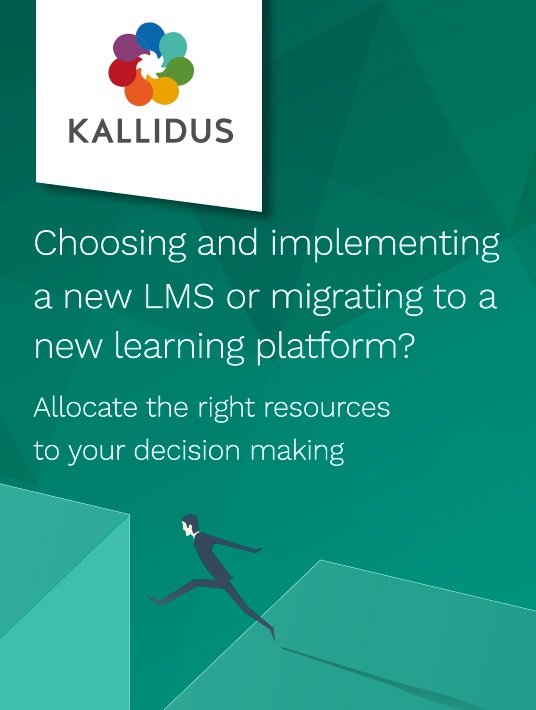How To Achieve Success When Choosing And Implementing An LMS
In the first part of this article, we explored the challenges you may face when choosing and implementing an LMS into your organisation. Here, we’ll see how to ensure your LMS’ fit to your organisation’s culture and the long-term success following its implementation.

Be Prepared
Spending time planning and preparing for the launch of your LMS will make a huge difference to the success of your implementation. Getting it right first time will leave a lasting impression on your users and will encourage them to become repeat visitors to the site. Once you have decided on your LMS provider, think about the following things prior to system training:
- Are your key stakeholders on board and in agreement in terms of costs, proposed timings, and security and data provision?
- Is your employee data available in the right format? You will need to ensure that extracted data is clean and consistent, with data that is usable for reporting purposes: think about whether you will want to filter certain information.
- How are employees to be assigned training?
- Map out your user journeys – why would they access the LMS? What do they need to be able to do? What would they need to be able to see?
- How many reports will you be required to produce? Work out the data you will need to store, and the reports you will need to create
- How would you like to improve structure and access to the training matrix, and how will you communicate this to your supplier?
- Do you need to upload training history against users and learning? You may want this for reporting purposes, or simply for users to be able to see the training they have previously completed.
- What key dates are you working to – and why? Do you have constraints in terms of resourcing that your vendor should be aware of when planning the work?
Gaining Acceptance From Your Learners
Learners are increasingly time short, with modern technologies such as emails, texts, and apps fighting for their attention. With just 5 to 10 seconds available to gain attention, employers must ensure that all learning content is designed with the learners’ experience at the forefront. This means that the LMS design should support an easy-to-navigate experience.
For an LMS to be fully accepted amongst learners, their perspective should be at the forefront of every decision:
Does it allow users to view customised content filtered by office and department?
Does it feel familiar in terms of personalised and relevant projects and courses?
Does it integrate with systems that users are familiar with? This is where HR and L&D teams can work seamlessly together – HR can focus their energies on the frontend aesthetics, whereas L&D teams can concentrate on the usability of the courses inputted into the backend of the system.
Measuring Engagement
Ensure that the LMS provider you opt for has powerful reporting functionality. Without this feature, you will be unable to prove a return on investment, making your efforts void. With powerful reporting tools, you will be able to automate the extraction of data. Particularly in the first few months of use, consider:
- The importance of the percentage of employees logging into the system
- How often they are logging in
- Courses that are proving popular
- Courses that are not
- The percentage of employees who are choosing extra courses to study for themselves
These questions will help you to gauge an idea of your return of investment in terms of employee engagement and how the system is being regarded within your organisation’s culture. Consider also implementing staff surveys to gain open-ended feedback regarding the implementation of a new LMS. Consider automating month-on-month reporting so that comparisons can be made and changes logged. If the initial reason for implementing the LMS was to avoid non-compliance fines, monitor your compliance rates.
However, there is no reason to overcomplicate matters; metrics are already available in terms of organisation satisfaction through the use of retention rates and turnover rates of staff. 50% of learners in 2017 reported poor user experience as one of the top barriers to their satisfaction [1] which can affect employee retention rates: unsatisfied employees that feel they are being held back are more likely to consider moving on sooner.
Take The Bulk From Your To-Do List
For your LMS to streamline your learning team structure, centralise data and enable you to report on learning success across the business, it requires flexibility on the front end and consistency on the backend.
Your Learners
The flexibile front end will allow for personalised branding on your LMS’s screen pages, adaptable content dependant on users’ accounts, and tailored content based on the users’ function within the business. The choice of courses presented should be customised based on popularity and their relevance to the individuals’ accounts.
If your LMS is mobile-optimised and user-friendly, your learners will be more inclined to engage with your learning content. Your LMS should be designed so that it is ‘nice and presentable, and [provides] a good user experience’ [2].
You
Ensure that the backend of your website is built for simple administration for updating different courses. Avoid LMSs with complicated, inconsistent backends that aren’t scalable and don’t drive efficiency. Whilst it may initially feel novel—or be perceived to be essential—to opt for an LMS with customisation available, this can further complicate matters. The more you customise your backend, the more you rely on your existing team. With no documented knowledge, you take a risk.
If you suddenly face turnover within your existing team, you will need to rapidly train their replacements to a high level to ensure that the LMS can continue to run effectively. With this taken into account, it may actually be favourable to opt for an out-the-box LMS as there is less opportunity for error. Once customised, it can be very difficult for your LMS provider to offer assistance; however, according to a Capterra study, 28% of organisations switch to a new LMS due to a lack of support [3]. With this in mind, ensure that you build a close relationship with your LMS provider so that support is always on hand should you need it.
Lastly, your LMS should have strong reporting capabilities to determine and interpret ROI: but also consider your existing data and team – do you have the right data and right skills available to interpret this data?
Conclusion
However you decide to use your LMS—in conjunction with classroom-based training, as a standalone, for compulsory courses or taking it one step further—ensure that you build relationships across the organisation to gain support from all departments.
By showcasing the benefits of the implementation of an online LMS, you can strengthen your business case through the backing of all departments; HR, IT, L&D, and Finance should come together providing all relevant information unique to their department before presenting your business study to the board.
Once all the information is gathered and available, you will be able to prove how an online LMS can simplify the learning process, provide better efficiency and user engagement, whilst remaining scalable, making it a lasting solution to your learning and development needs.
References:
[1] Capterra (8 April, 2015). LMS Industry User Research Report
[2] Westfall, B. (n.d.). 7 best practices: Avoid flunking your LMS implementation










